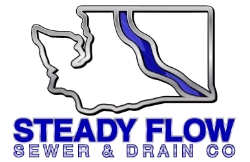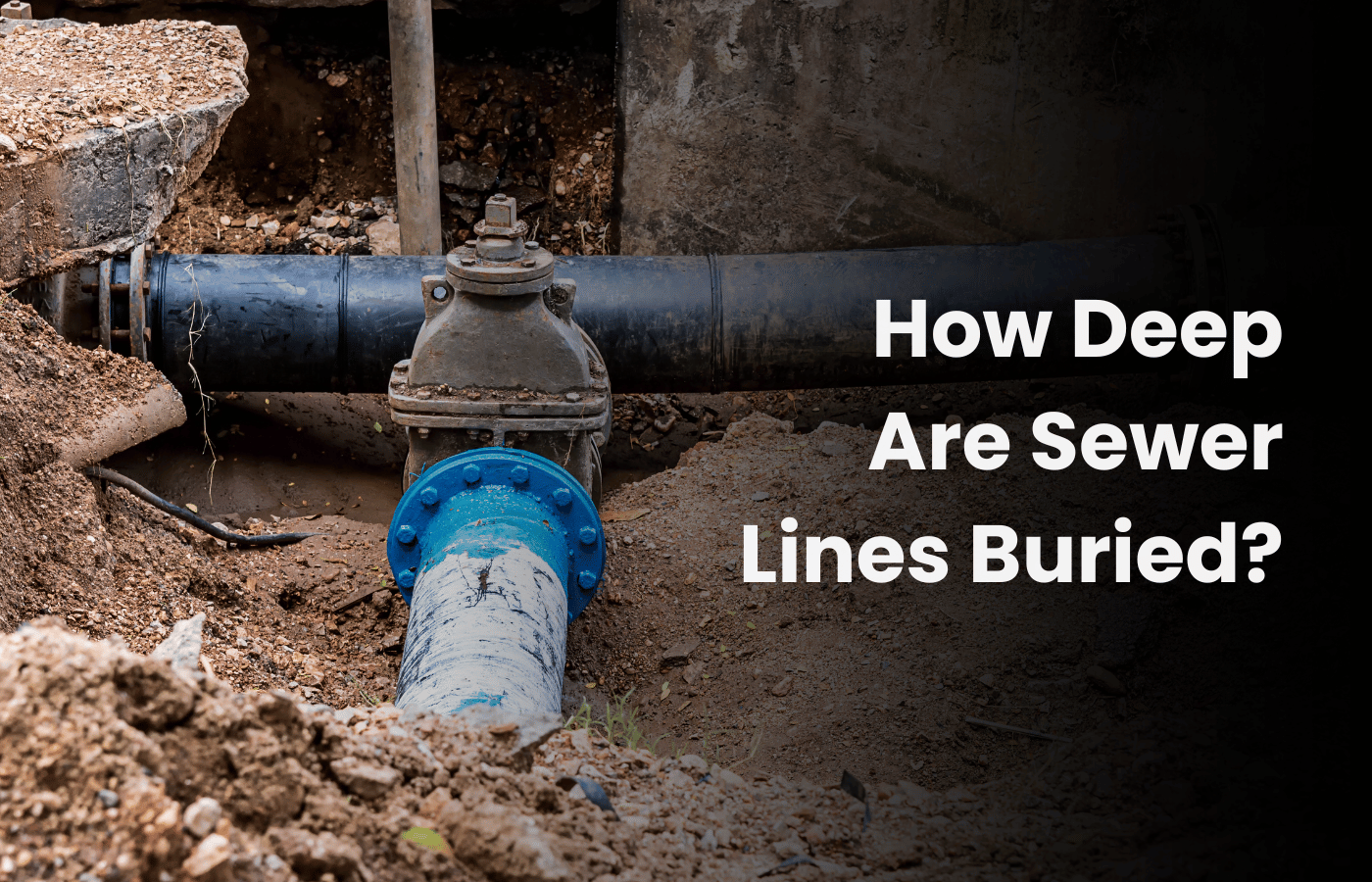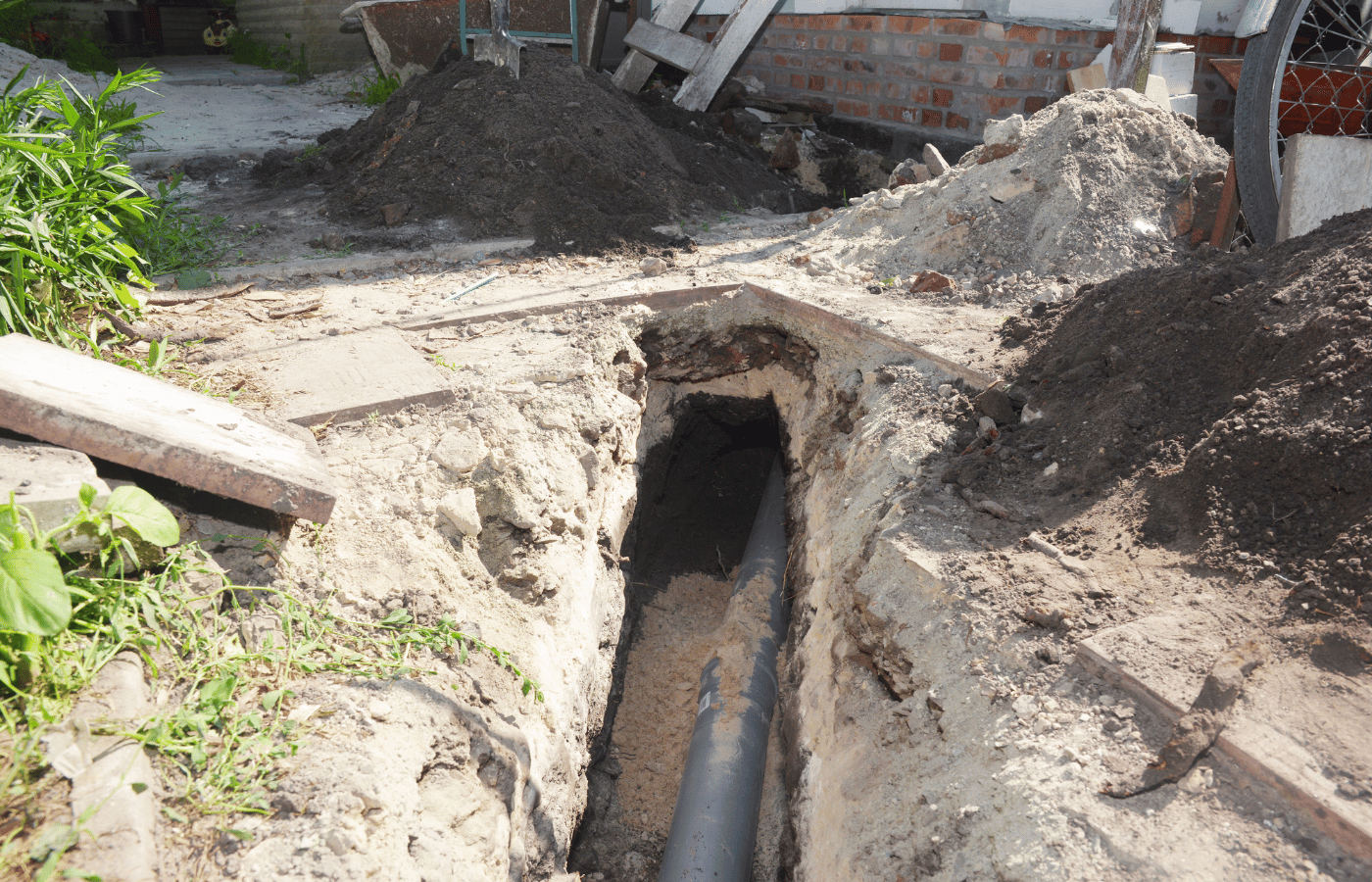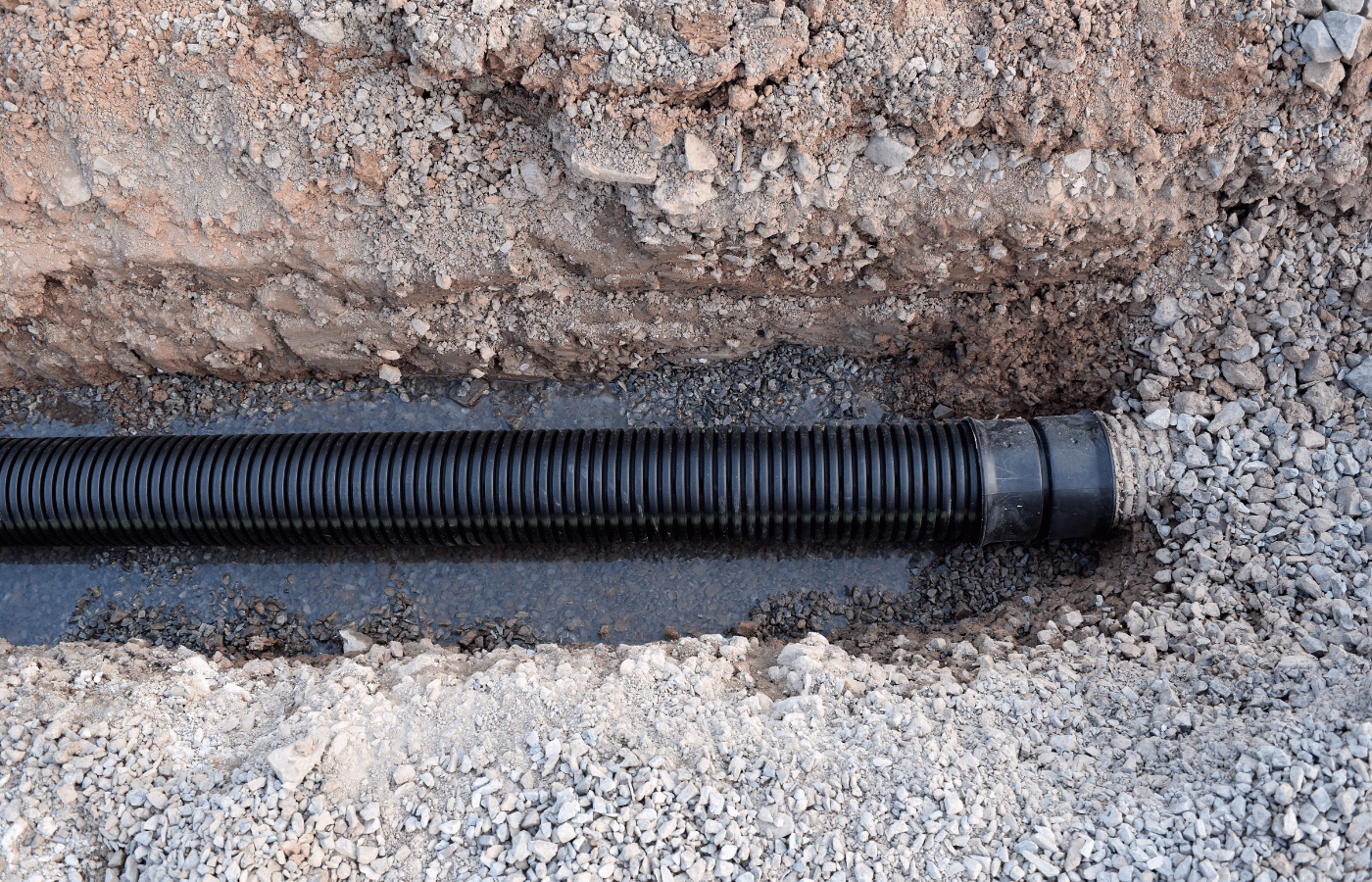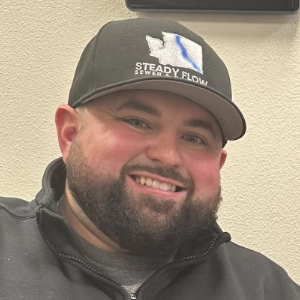How Deep Are Sewer Lines Buried?
How Deep Are Sewer Lines Buried? Comprehensive Guide for 2025
Sewer lines are an integral part of any home’s plumbing system, yet their depth and placement often go unnoticed until a problem arises. Knowing how deep are sewer lines buried is crucial for homeowners to prevent damage, ensure proper installation, and adhere to local regulations. Without this knowledge, even simple landscaping projects can lead to costly mistakes like breaking sewer pipes or violating building codes.
At Steady Flow Drain Co., we provide expert guidance and services to homeowners, ensuring your sewer lines are installed at the appropriate depth and remain in excellent condition. With our local expertise, advanced tools, and commitment to customer satisfaction, we help homeowners avoid common sewer line pitfalls.
Understanding Sewer Line Depth
Sewer line depth plays a critical role in ensuring a plumbing system’s performance and longevity. Proper burial prevents freezing in colder climates, protects against accidental damage, and complies with local building codes. The depth at which sewer lines are buried depends on several factors, including the property’s location, climate, and type of sewer system. Ignoring these considerations can lead to costly repairs and operational issues.
What Are Sewer Lines?
Sewer lines are the network of pipes that transport wastewater from your home’s sinks, toilets, and drains to a municipal sewer system or septic tank. They are essential for maintaining hygiene and sanitation in both residential and commercial settings.
Residential vs. City Sewer Lines
- Residential Sewer Lines: Installed on private properties, these pipes handle wastewater from homes and connect to larger municipal systems or septic tanks.
- City Sewer Lines: Managed by local authorities, these larger pipes carry wastewater from multiple properties to treatment facilities.
Factors That Determine Sewer Line Depth
Climate and Frost Depth
One of the most significant factors influencing sewer line depth is the local climate. In colder regions, pipes must be buried below the frost line to prevent freezing and potential damage.
- Cold Climates: Frost lines can reach depths of up to 80 inches in places like Minnesota, necessitating deeply buried sewer lines.
- Warm Climates: In areas with mild weather, such as Oklahoma, sewer lines may be buried as shallow as 20 inches.
Local Plumbing Codes
Each region has specific regulations regarding the installation of sewer lines. These codes are designed to ensure safety and efficiency, and failure to adhere can result in penalties.
- Building codes often dictate the minimum and maximum depth requirements based on local conditions.
- Consulting with local authorities or professional plumbers can help ensure compliance.
Type of Sewer System
- Gravity-Fed Systems: Require a steeper slope and deeper installation to maintain proper waste flow.
- Pressure Systems: Use pumps to move wastewater, allowing for shallower depths in some cases.
Average Sewer Line Depth Across Regions
The depth of sewer lines depends on the type of pipe, location, and environmental conditions. Generally:
- Residential Sewer Lines: Typically buried 18 to 30 inches deep but may reach 6 feet in colder regions to avoid freezing.
- City Sewer Lines: Often buried 12 feet or more to ensure proper waste flow and to remain beneath residential pipes.
The depth at which sewer lines are buried varies widely based on location and environmental conditions. Here are some typical ranges:
- Cold Regions: 6 feet or more to protect against frost.
- Moderate Climates: 3 to 4 feet, sufficient for areas with minimal frost.
- Warm Regions: 1 to 2.5 feet, depending on soil conditions and municipal requirements.
In addition to climate, the type of soil and proximity to other utilities can also influence burial depth.
Importance of Proper Sewer Line Depth
Benefits of Correct Depth
- Prevents Freezing: Ensures that wastewater continues to flow smoothly even in freezing conditions.
- Protects Against Damage: Deep burial reduces the risk of damage from heavy storms, uprooted trees, or accidental digging.
- Ensures Compliance with Regulations: Knowing how deep are sewer lines buried ensures adherence to local building codes, avoiding fines and legal issues.
Consequences of Improper Depth
- Freezing and Bursting: Shallow pipes in cold regions can freeze and rupture.
- Root Intrusion: Shallow pipes are more susceptible to tree root damage.
- Higher Repair Costs: Incorrectly buried pipes often lead to costly repairs and replacements.
How to Determine the Depth of Your Sewer Line
Consult Local Authorities
Your city’s engineering or zoning office can provide detailed information about sewer line requirements and existing infrastructure on your property.
Professional Assistance
At Steady Flow Sewer & Drain, we use advanced tools like sewer cameras to accurately locate and assess the depth of your sewer lines. This ensures precision and compliance with local standards. Knowing how deep are sewer lines buried is crucial for making informed decisions.
DIY Methods
Homeowners can check property maps or use basic digging tools to locate sewer lines, though this is less reliable than professional methods.
Why Professional Assistance Matters
DIY attempts to locate sewer lines can lead to inaccuracies and potential damage. Professionals not only pinpoint the exact depth but also ensure compliance with local regulations and prevent unnecessary excavation.
Special Considerations for Cold and Warm Climates
Cold Climates
In cold areas, sewer lines must be buried deep enough to stay below the frost line. For example:
- Minnesota: Frost depths can exceed 80 inches, requiring deep trenches.
- Colorado: Frost lines average around 55 inches, necessitating similar precautions.
Warm Climates
In warmer regions, frost depth is less of a concern, allowing for shallower installations. However, other factors such as soil type and utility placement still play a role.
Understanding how deep are sewer lines buried in your specific climate is essential for ensuring long-term efficiency and avoiding costly repairs.
Common Challenges and Solutions for Sewer Line Depth
Shifting Soil and Erosion
Soil movement can expose or damage sewer lines over time. Using stable backfill materials and ensuring proper compaction during installation can mitigate this risk.
Tree Root Intrusion
Tree roots can penetrate sewer lines, causing blockages and damage. Avoid planting trees near sewer lines or install root barriers to protect pipes.
Accidental Damage
Excavation or construction projects often risk damaging sewer lines. Accurate mapping and professional inspections can prevent these issues.
Knowing how deep are sewer lines buried can help avoid accidental damage and ensure that all necessary precautions are taken.
Common Sewer Line Problems Related to Depth
Issues Caused by Improper Burial
- Freezing: Shallow pipes in cold climates are prone to freezing, disrupting wastewater flow.
- Root Intrusion: Tree roots can penetrate shallow pipes, causing blockages and structural damage.
- Physical Damage: Pipes buried too close to the surface are at risk of being struck during construction or landscaping.
Impact on Your Plumbing System
- Frequent clogs and backups.
- Reduced efficiency and shortened lifespan of the sewer system.
- Increased repair and replacement costs.
Steps for Ensuring Proper Sewer Line Burial
Best Practices for Installation
- Follow Frost Depth Guidelines: Always bury pipes below the local frost depth to prevent freezing.
- Maintain Proper Slope: Ensure a minimum slope of 1/8 inch per foot for effective waste flow.
- Use Durable Materials: High-quality pipes reduce the risk of leaks and damage over time.
Tips for Homeowners
- Plan ahead for landscaping or construction projects to avoid damaging sewer lines.
- Consult professionals for accurate depth measurements and proper installation techniques.
Additional Tips for Maintaining Sewer Lines
Regular Inspections
Routine inspections help detect potential issues early, preventing costly repairs. At Steady Flow Drain Co., we offer thorough inspections using advanced technology to identify problems before they escalate.
Preventative Measures
- Avoid Planting Trees Near Sewer Lines: Tree roots can cause significant damage to underground pipes.
- Use Sewer-Safe Materials: Avoid flushing non-biodegradable items to prevent clogs.
When to Call Steady Flow Drain Co.
- If you notice slow drains, unusual odors, or recurring backups.
- For routine maintenance and emergency repairs.
- To schedule an inspection or consultation.
Protect Your Sewer System with Steady Flow Drain Co.
Properly burying sewer lines is essential for maintaining a functional and efficient plumbing system. By adhering to local regulations and considering factors like climate and frost depth, homeowners can prevent common sewer line issues and ensure long-lasting performance.
At Steady Flow Drain Co., we’re here to help. Whether you need sewer line installation, repair, or maintenance, our experienced team is equipped to handle all your needs. Contact us today to schedule an appointment and experience our commitment to excellence.
How Steady Flow Drain Co. Resolves Sewer Line Issues
At Steady Flow Drain Co., we specialize in addressing sewer line issues, from improper depth to structural damage.
Our Services
- Sewer Line Repair: Fixing cracks, leaks, and blockages caused by shallow or improperly installed pipes.
- Inspections: Utilizing state-of-the-art sewer cameras to assess pipe condition and determine how deep are sewer lines buried.
Why Choose Us?
- Local expertise ensures compliance with Washington state regulations.
- Advanced tools and techniques minimize disruption during repairs.
- Commitment to customer satisfaction guarantees high-quality results.
Contact Information
Our company is built on a foundation of integrity and excellence. At Steady Flow Drain Co., we prioritize long-term relationships with our customers, ensuring every service reflects our core values of honesty, teamwork, and professionalism. With experienced technicians and a reputation for outstanding service, we are your trusted partner for all sewer and drain needs.
We understand that sewer and drain emergencies can be stressful and unexpected. That’s why we offer flexible solutions to fit your budget and deliver long-lasting results. Our team consists of licensed and certified professionals with extensive experience in hydro jetting and other plumbing solutions. We are also insured and bonded.
Contact Our Team for an Appointment
For more information about our services or to schedule an appointment, reach out to Steady Flow Drain Co. today:
Call us: (206) 984-8909
Schedule Service Online
Read More About Sewer System from Our Blog:
- Why Does My House Smell Like Sewer?
- Why Is My Sewer Bill So High?
- Sewer Repair: Why Professional Help is Crucial
Read our reviews
Special Offers

Contact Our Team for an Appointment
Our trenchless company prioritizes your satisfaction with our work. We strive to be your trusted provider of all drain and sewer line services, and we look forward to serving you. For more information about trenchless pipe lining or to arrange an appointment, call us at Steady Flow Sewer & Drain or fill out the online form today.
